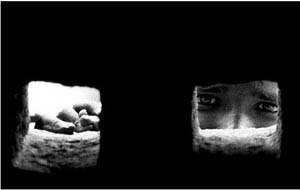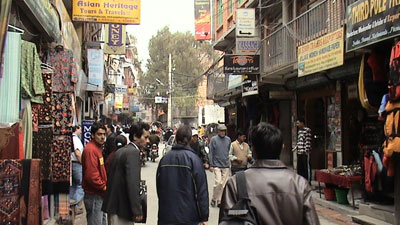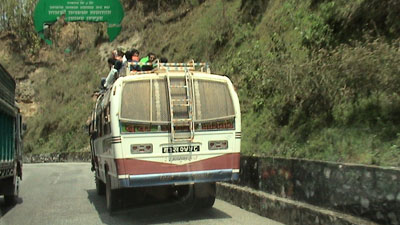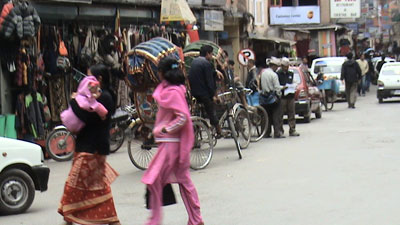Healing & Restoring
Oppressed Women & Children,
Physically, Spiritually, and Emotionally
In the Himalayan mountains the majority of people do not have enough food to eat on a daily basis. Each year at least one million children are trafficked globally and the numbers are rapidly increasing as the demands increase. We saw with our own eyes the devastation the tsunami had on children orphaned as a result of this tragedy. Desperate to have someone to care for them, going with any adult who offered a roof over their heads and food, only to be disappointed later, with no family to speak for them, when forced to work in a brothel.
 Many children in the Himalayan mountains also have no parents to protect them and family members are too poor to feed them. The children are vulnerable and become orphans of war and unrest, victims of extreme poverty. Their lives are unstable and even when taken into a children’s home many find it difficult not to act out of their hurt and wounded hearts, due to being rape victims. Some have seen parents murdered before their eyes by political groups seeking children to fight in their army. We have seen many children who have suffered permanent damage, physically and psychologically due to the trauma they have experienced in their young lives while just trying to survive. Many children in the Himalayan mountains also have no parents to protect them and family members are too poor to feed them. The children are vulnerable and become orphans of war and unrest, victims of extreme poverty. Their lives are unstable and even when taken into a children’s home many find it difficult not to act out of their hurt and wounded hearts, due to being rape victims. Some have seen parents murdered before their eyes by political groups seeking children to fight in their army. We have seen many children who have suffered permanent damage, physically and psychologically due to the trauma they have experienced in their young lives while just trying to survive.
In India we saw firsthand the cells or cages, where the girls live in squalor serving 20-30 customers daily. Many have babies as a result of this forced way of life. In spite of this they are forced to continue serving customers, because when they refuse, they are badly beaten. A few of these young women living in the prison of sex slavery have come to know what it is to have a relationship with God. During their few minutes of break they have met people who have shared the living God with them and have given them hope. Although very few are rescued before they contract HIV/AIDS, at least there is a way out for their children born in the brothels, who only have one thing to look forward to—that of being used like their mothers. Some of these brothels will allow "Social workers" to come in and take the children for an afternoon, and get them out of the way of clients, but usually the children are in the same room, under the bed, as the mother works.
 Please know that in certain countries the stats are extremely frightening, such as in the Himalayan Mountains. Please know that in certain countries the stats are extremely frightening, such as in the Himalayan Mountains.
A region of extreme poverty, illiteracy, and degrading of women and girls. Many are mistreated in their own homes by family members. One such woman, was kept in a 3ft by 4ft cage for eight years because she gave birth to a girl baby, instead of a boy. Her husband’s family tortured her severely causing her to be mentally unstable, then her own family put her in a cage because they didn’t know what to do with her. Today she has been released, but is crippled and cannot walk from sitting all those years. Another 24-year-old woman was murdered by her husband and his second wife as she was nursing a three month old baby. Unfortunately these reports are not uncommon.
Statistics:
The Himalayas’ national, cultural, religious, political, and legal frameworks further perpetuate an environment conducive to the exploitation and vulnerability of women and girls. The population is 24 1/2 million in only 140,000 sq km. where the per capita income is only $250 US. A very high percentage of people live below the poverty line, 60%-71% . Nearly one half of the population is illiterate. Only 45.2%. of the population is literate. Of the males 62.7% are literate and only 27.6% of the females are literate. (School attendance is not required by law and private schools are numerous but only a few parents can afford to send their children, buy uniforms and books etc. Many children work to support the family either in the villages or on city streets.) The urban population is only 12% and the life expectancy is only 59.36% for men and 58.63% for women.
(www.unicef.org/infobycountry and www.cia.gov/cia/pubications/factbook/index.htm)
 This region has made some progress, however in recent years as there are over three hundred children’s homes which are registered and many more unregistered, operated by families who have taken children into their own homes, bringing the number to over one thousand.. In the streets of the capitol cities alone there are 1500 to 2000 street children without food and shelter. It is easy to see why the largest number of victims come from Asia with over 335,000 victims each year from Southeast Asia and 150,000 from South Asia. (US Dept. Congressional Research Service Report 98-649C) This region has made some progress, however in recent years as there are over three hundred children’s homes which are registered and many more unregistered, operated by families who have taken children into their own homes, bringing the number to over one thousand.. In the streets of the capitol cities alone there are 1500 to 2000 street children without food and shelter. It is easy to see why the largest number of victims come from Asia with over 335,000 victims each year from Southeast Asia and 150,000 from South Asia. (US Dept. Congressional Research Service Report 98-649C)
From Nepal an estimated 12,000 girls are trafficked (each year) and sold to brothels in the Middle East and Southeast Asia. (Resisting trafficking in Women: Auditing testimonies and restoration approaches" Kathmandu: Himalayan Rights Monitors 2003).
Over 20% of sexually trafficked Nepalese women and children are girls under 16yrs. (http://www.cwin-nepal.org/press-room/factsheet/index.htm)
Over 60% of the prostituted women and girls working in Mumbai red light districts , where the majority for Nepalese are trafficked, are suspected to be HIV positive. (Sex Slaves, Virago Press, London 2000.)
The girls are forced to work thirteen hours a day, earning roughly $5 a day, ( forced to buy their own drinking water) serve a maximum for 40 men per day. Approx. 95% of their earnings are kept by the brothel owner.
(Trafficking in Girls Special Reference to Prostitution: ILO Geneva, November 2001)
The children/ young people susceptible to commercial sexual exploitation are primarily girls, and some boys aged 10-18yrs. (http://www.ecpat.org/about_csec/index.htm.)
 CHILDREN ARE IN CRISIS: CHILDREN ARE IN CRISIS:
- Traffickers are increasingly seeking out new destinations for child sex tourism.
- Traffickers are increasingly exploiting children sexually through the internet and going into small villages that have extreme poverty, exchanging information etc.
- Street children and youth are increasingly exchanging sex for survival ie food and shelter, especially in the third world countries of Asia.
- Children are increasingly being sold and trafficked across new routes, borders and between continents at the hands of organized traffickers.
(www.ecpat.org/about_csec/index.html)
THE TRAGEDY... |